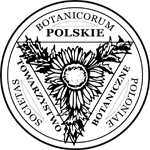Non-lipophilic mycobiota of human skin
Abstract
Keywords
Full Text:
PDFReferences
Biedunkiewicz A, Schulz Ł. Fungi of the genus Exophiala in tap water. Mikologia Lekarska. 2012;19:23–26.
Raport marki Dettol i Centrum Zdrowia Dziecka. Higiena rąk i otoczenia Polaków [Internet]. 2007 [cited 2016 Jan 21]. Available from: http://pis.lodz.pl/data/other/hr_polacy.pdf
Findley K, Oh J, Yang J, Conlan S, Deming C, Meyer JA, et al., Topographic diversity of fungal and bacterial communities in human skin. Nature. 2013;498(7454):367–370. http://dx.doi.org/10.1038/nature12171
Hannigan GD, Grice EA. Microbial ecology of the skin in the era of metagenomics and molecular microbiology. Cold Spring Harb Perspect Med. 2013;3(12):a015362. http://dx.doi.org/10.1101/cshperspect.a015362
Pawłowicz A, Adamski Z. Flora dermatofitowa i oportunistyczna w zmianach grzybiczych dłoni, stóp oraz paznokci u pacjentów Kliniki Dermatologii AM w Poznaniu w latach 1984-1994. Mikologia Lekarska. 1994;2:95–100.
de Hoog GS, Guarrao J, Gene J, Figueras MJ. Atlas of clinical fungi. 2nd ed. Centraalbureau voor Schimmelcultures Utreht. Reus: Universitat Rovira i Virgili; 2000.
R Core Team. A language and environment for statistical computing [Internet]. Vienna: R Foundation for Statistical Computing; 2013 [cited 2016 Jan 21]. Available from: http://www.r-project.org
Salter S, Cox MJ, Turek EM, Calus ST, Cookson WS, Moffatt MF, et al. Reagent and laboratory contamination can critically impact sequence-based microbiome analyses. BMC Biol. 2014;12:87 http://dx.doi.org/10.1186/s12915-014-0087-z
Kwaśniewska J, Szefer E, Jaskółowska A. Niektóre aspekty grzybic skóry i paznokci na podstawie danych pacjentów zakładu diagnostyki i leczenia chorób pasożytniczych i grzybic uniwersytetu medycznego w Łodzi. Mikologia Lekarska. 2012;19(1):17–22.
Rangel-Frausto MS, Houston AK, Bale MJ, Fu C. Wenzel RP. An experimental model for study of Candida survival and transmission in human volunteers. Eur J Clin Microbiol Infect Dis. 1994;13(7):590–595. http://dx.doi.org/10.1007/BF01971311
Okuda M, Yoshiike T, Ogawa H. Detergent-induced epidermal barrier dysfunction and its prevention. J Dermatol Sci. 2002;30(3):173–179. http://dx.doi.org/10.1016/S0923-1811(02)00106-8
DOI: https://doi.org/10.5586/am.1068
|
|
|






